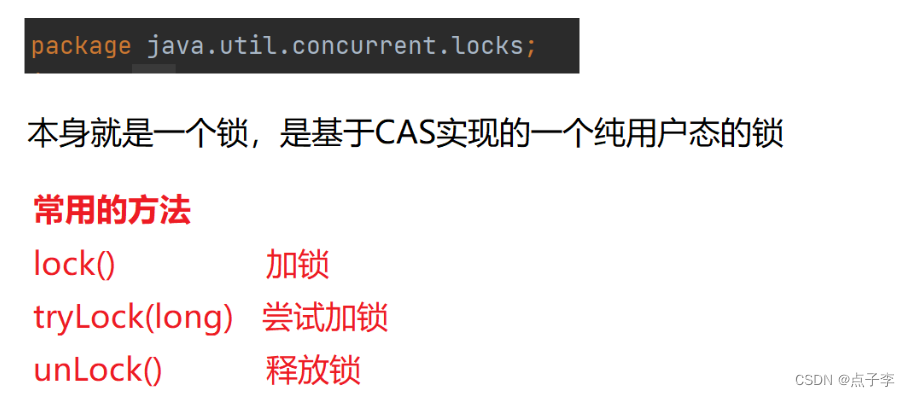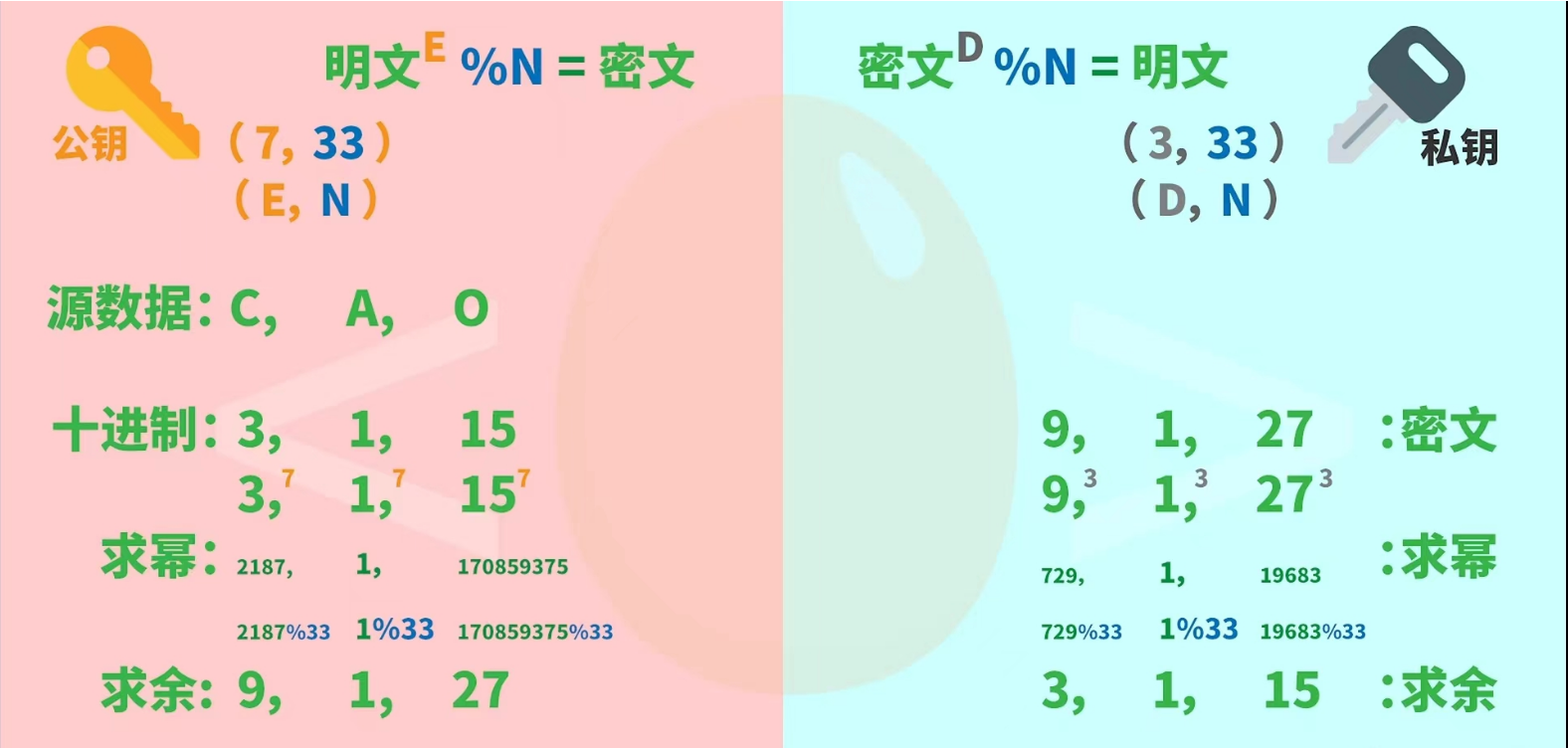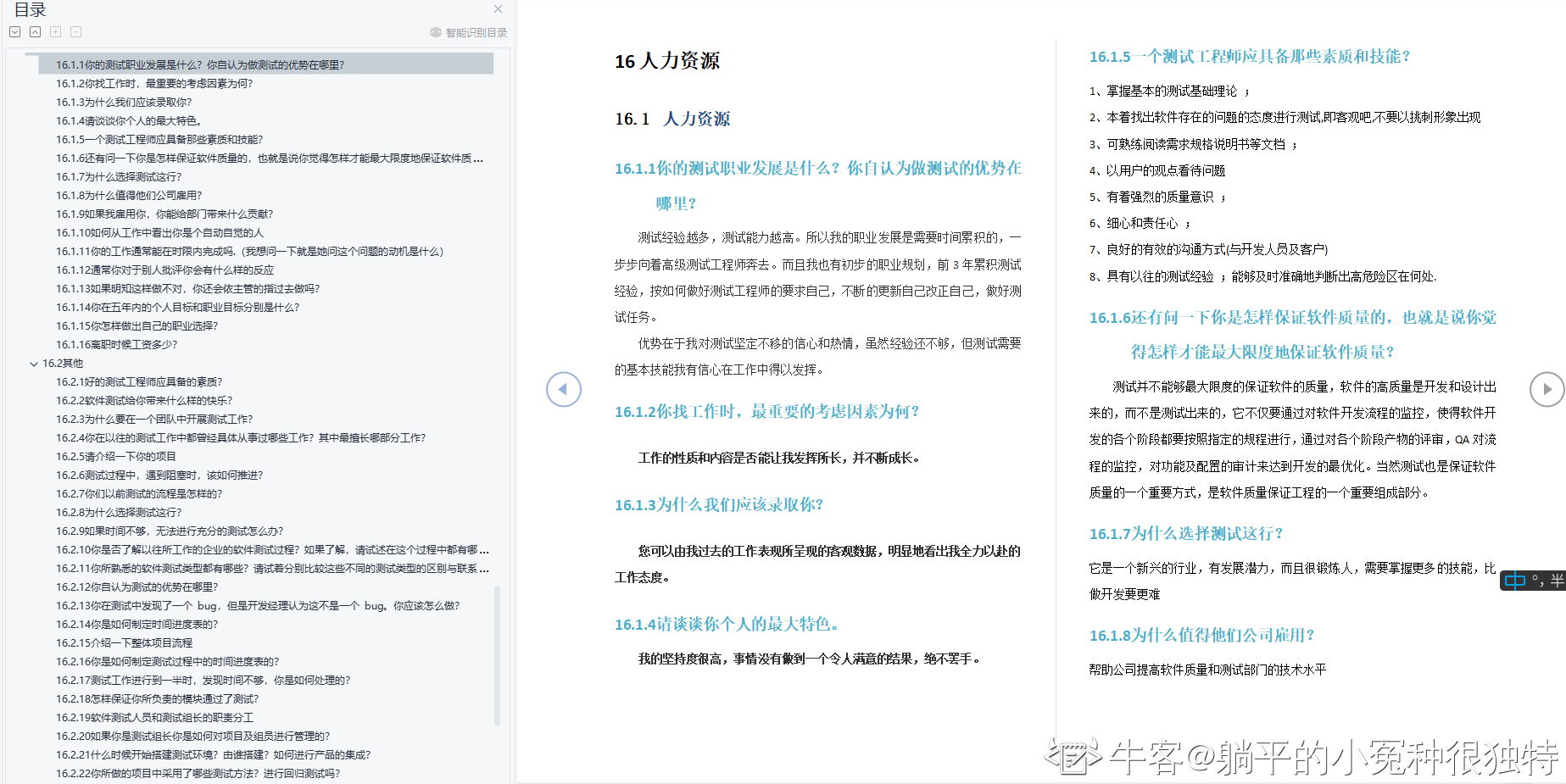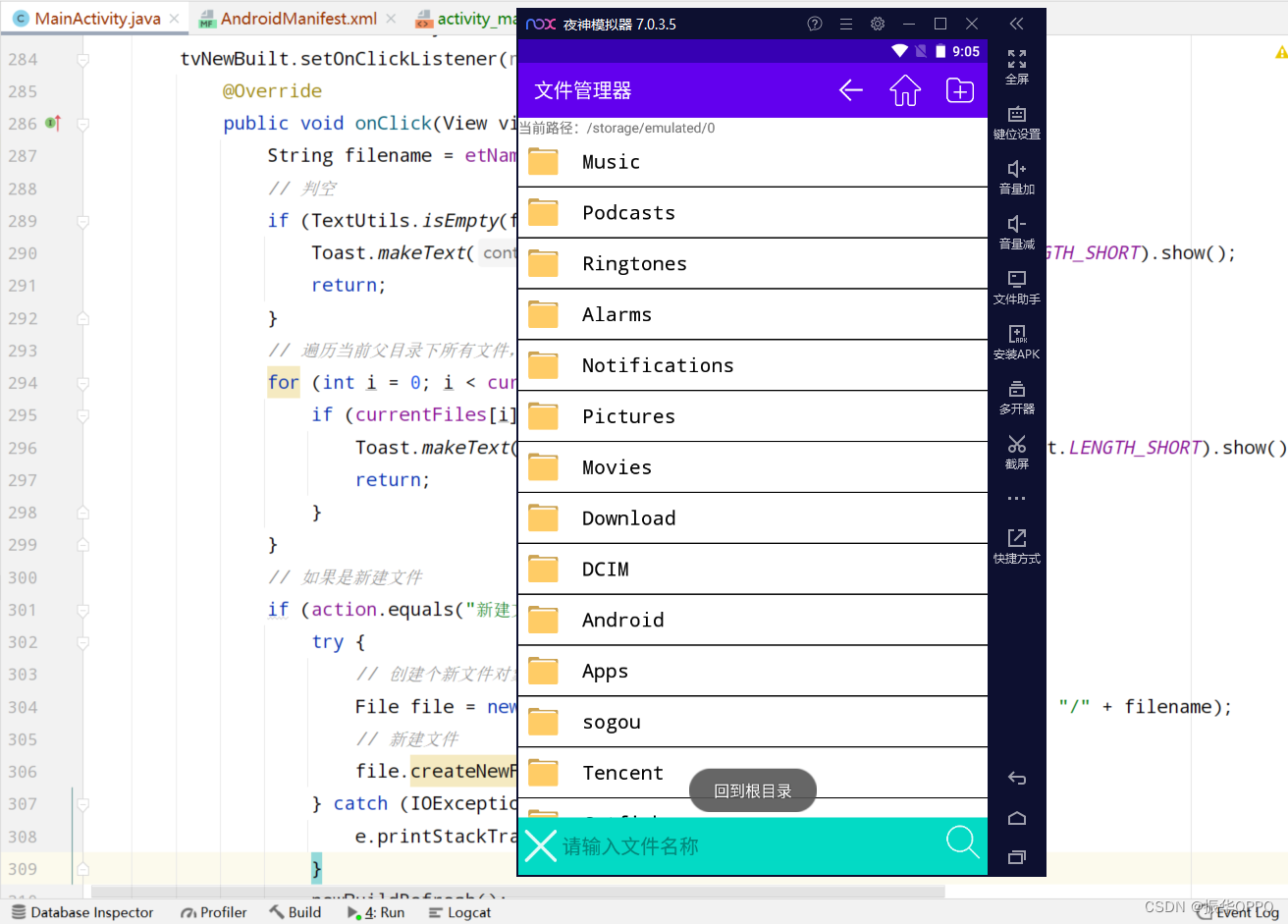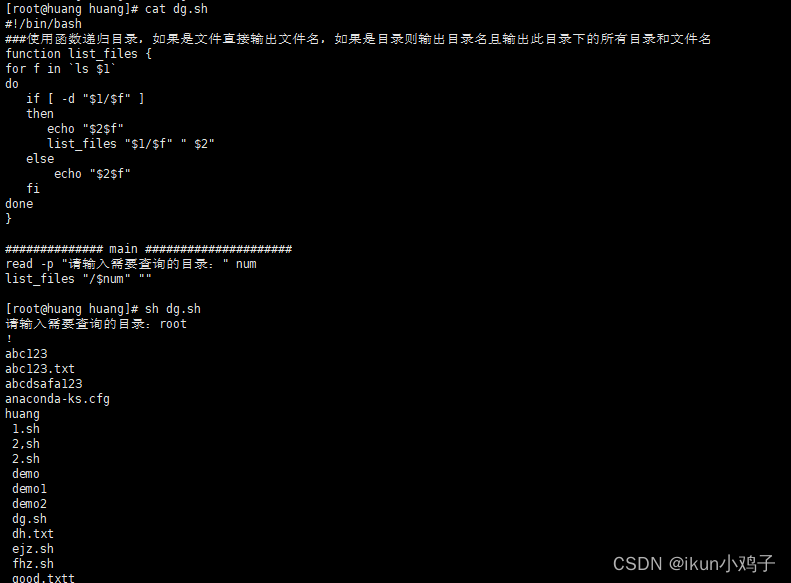总目录
文章目录
- 总目录
- 一、什么是用户控件和自定义控件
- 1 用户控件和自定义控件
- 2 相关知识点
- 2 用户控件和自定义控件的适用场景
- 二、用户控件的使用
- 1.通过依赖属性和路由事件封装用户控件的案例
- 2.通过依赖属性+命令依赖属性封装用户控件的案例
- 3.只对外提供属性不对外提供操作的用户控件封装案例
- 三、自定义控件的使用
- 1. 创建普通类继承现有控件进行扩展 - 圆角的Button
- 2. 创建自定义控件
- 3.相关知识点
- 结语
一、什么是用户控件和自定义控件
1 用户控件和自定义控件
在WPF中,用户控件(UserControl)和自定义控件(CustomControl)都是对UI控件的一种封装方式,目的都是实现封装后控件的重用。
只不过各自封装的实现方式和使用的场景上存在差异。
| 不同点 | UserControl | CustomControl |
|---|---|---|
| 是否为复合控件 | 注重控件的复合,可以将多个控件组合成一个复合控件 | 不是复合控件,而是通过继承已有控件,对控件的功能和外观进行扩展 |
| 控件代码 组成部分 | 用户控件由XAML代码和后台代码组成且两者紧密绑定 | 自定义控件由控件的类对象代码(后台代码) 以及Generic.xaml中的样式模板代码组成 |
| 是否可模板重写 | 不支持在外部对控件进行模板重写和样式的更改 | 支持在外部对控件的进行模板重写和样式的修改 |
| 继承关系 | 继承自UserControl | 继承自Control |
| 编写过程 | 可以在编辑器中实时查看控件效果,更直观 | 不可实时查看控件效果,不直观 |
2 相关知识点
在定义用户控件和自定义控件的过程中,会涉及到以下知识点:
- 当封装的控件,需要对外提供属性 以供设置的时候,我们需要通过 定义依赖属性或者附加属性来实现
- 当封装的控件,需要对外提供路由事件的时候,我们需要通过定义自定义路由事件来实现
- 当封装的控件,如果觉得路由事件不好用,希望直接对外提供命令的时候,我们需要通过依赖属性定义一个或多个对外的命令属性来实现
2 用户控件和自定义控件的适用场景
当我们写一个控件的时候,考虑到该控件在当前项目的其他界面会重复使用,或者在后续其他的项目中还会得到复用的时候,我们就可以将该控件封装成一个 自定义的用户控件,或者直接封装成自定义控件。
- 如果希望封装的控件外观可以通过ControlTemplate 进行更改的时候,使用CustomControl
- 如果希望控件的样式可以更改的时候,也可使用CustomControl
- 反之,当我们界面元素较多,需要多个控件进行复合才可组成的时候,可以采用UserControl
二、用户控件的使用
用户控件的封装无非以下三种形式,会分别通过三个案例说明:
- 需要对外提供属性和事件(复合控件内没有可以使用Command的控件)
- 只需对外提供属性,属性除了正常的依赖属性外,还需包含ICommand 类型或其派生的依赖属性
- 只对外提供属性值的设置,所有操作的业务逻辑全部封装到控件内部
这三种形式的封装,有各自的适用场景。
1.通过依赖属性和路由事件封装用户控件的案例

1.1 先创建用户控件,然后在控件内定义依赖属性和路由事件
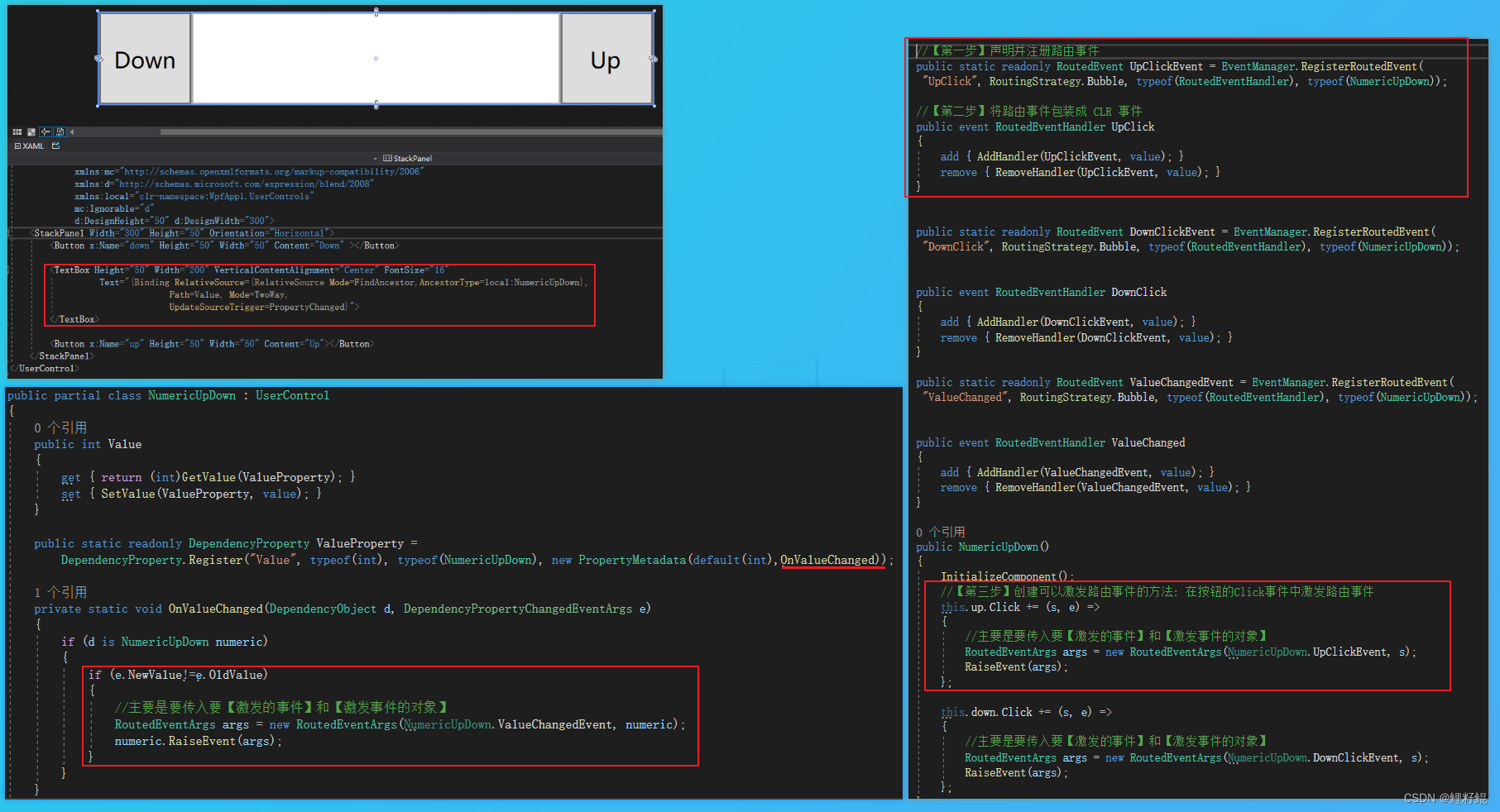
- 步骤1 :创建用户控件,然后在控件的后台代码中,根据需要对外提供的属性定义依赖属性
public int Value
{
get { return (int)GetValue(ValueProperty); }
set { SetValue(ValueProperty, value); }
}
public static readonly DependencyProperty ValueProperty =
DependencyProperty.Register("Value", typeof(int), typeof(NumericUpDown), new PropertyMetadata(default(int),OnValueChanged));
private static void OnValueChanged(DependencyObject d, DependencyPropertyChangedEventArgs e)
{
if (d is NumericUpDown numeric)
{
if (e.NewValue!=e.OldValue)
{
//主要是要传入要【激发的事件】和【激发事件的对象】
RoutedEventArgs args = new RoutedEventArgs(NumericUpDown.ValueChangedEvent, numeric);
numeric.RaiseEvent(args);
}
}
}
- 步骤2:根据需求定义需要对外提供的路由事件
//【第一步】声明并注册路由事件
public static readonly RoutedEvent UpClickEvent = EventManager.RegisterRoutedEvent(
"UpClick", RoutingStrategy.Bubble, typeof(RoutedEventHandler), typeof(NumericUpDown));
//【第二步】将路由事件包装成 CLR 事件
public event RoutedEventHandler UpClick
{
add { AddHandler(UpClickEvent, value); }
remove { RemoveHandler(UpClickEvent, value); }
}
public NumericUpDown()
{
InitializeComponent();
//【第三步】将合理的业务中激发定义的路由事件
// 如该场景下适合在 名为up的Button的Click事件中激发路由事件,这样就可以将自定义的路由事件与按钮的Click事件绑定在一起
this.up.Click += (s, e) =>
{
//主要是要传入要【激发的事件】和【激发事件的对象】
RoutedEventArgs args = new RoutedEventArgs(NumericUpDown.UpClickEvent, s);
RaiseEvent(args);
};
}
- 步骤3:在用户控件xaml中绑定 定义的依赖属性,通过RelativeSource的方式实现:
<TextBox Height="50" Width="200"
Text="{Binding RelativeSource={RelativeSource Mode=FindAncestor,AncestorType=local:NumericUpDown},
Path=Value, Mode=TwoWay,
UpdateSourceTrigger=PropertyChanged}">
</TextBox>
1.2 再者在引用用户控件的地方,绑定相关的值和命令
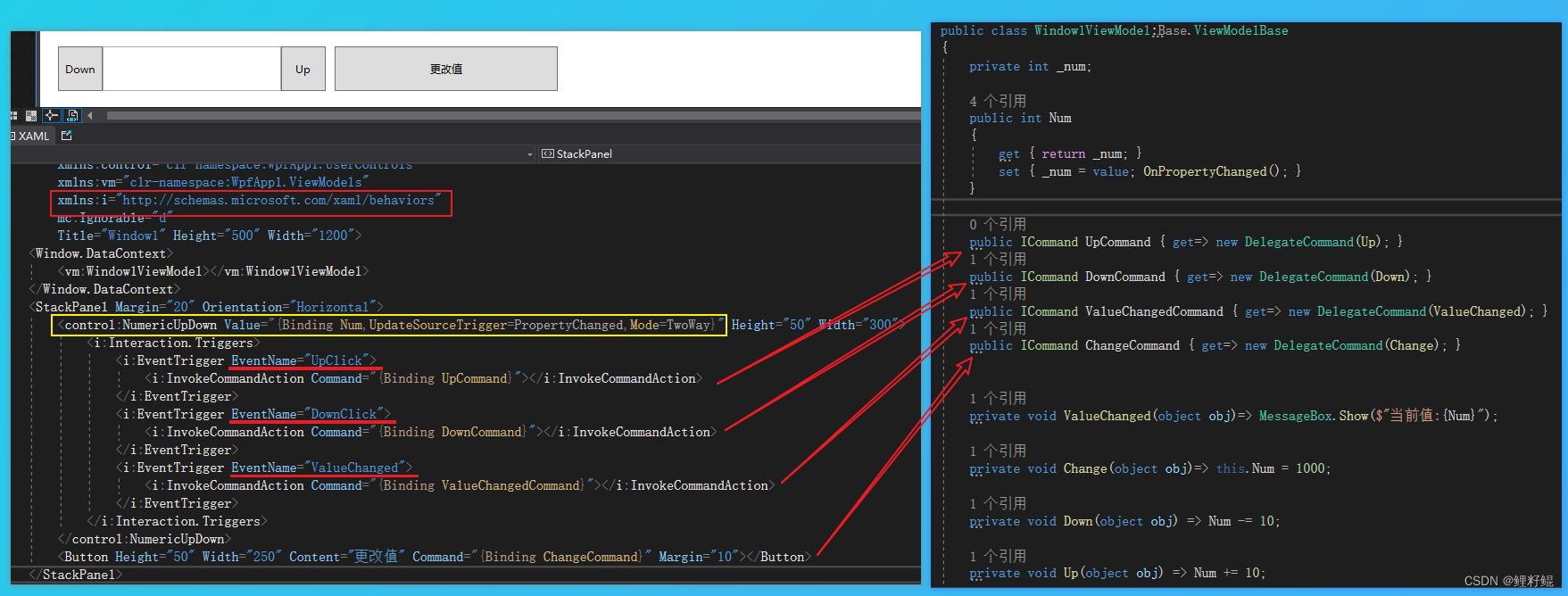
- 步骤1:引用用户控件,将用户控件对外提供的属性 绑定ViewModel中的属性
- 步骤2:然后根据需要依次将事件转为命令予以绑定
<Window x:Class="WpfApp1.Views.Window1"
xmlns="http://schemas.microsoft.com/winfx/2006/xaml/presentation"
xmlns:x="http://schemas.microsoft.com/winfx/2006/xaml"
xmlns:d="http://schemas.microsoft.com/expression/blend/2008"
xmlns:PresentationOptions="http://schemas.microsoft.com/winfx/2006/xaml/presentation/options"
xmlns:mc="http://schemas.openxmlformats.org/markup-compatibility/2006"
xmlns:local="clr-namespace:WpfApp1.Views"
xmlns:control="clr-namespace:WpfApp1.UserControls"
xmlns:vm="clr-namespace:WpfApp1.ViewModels"
xmlns:i="http://schemas.microsoft.com/xaml/behaviors"
mc:Ignorable="d"
Title="Window1" Height="500" Width="1200">
<Window.DataContext>
<vm:Window1ViewModel></vm:Window1ViewModel>
</Window.DataContext>
<StackPanel Margin="20" Orientation="Horizontal">
<control:NumericUpDown Value="{Binding Num,UpdateSourceTrigger=PropertyChanged,Mode=TwoWay}" Height="50" Width="300">
<i:Interaction.Triggers>
<i:EventTrigger EventName="UpClick">
<i:InvokeCommandAction Command="{Binding UpCommand}"></i:InvokeCommandAction>
</i:EventTrigger>
<i:EventTrigger EventName="DownClick">
<i:InvokeCommandAction Command="{Binding DownCommand}"></i:InvokeCommandAction>
</i:EventTrigger>
<i:EventTrigger EventName="ValueChanged">
<i:InvokeCommandAction Command="{Binding ValueChangedCommand}"></i:InvokeCommandAction>
</i:EventTrigger>
</i:Interaction.Triggers>
</control:NumericUpDown>
<Button Height="50" Width="250" Content="更改值" Command="{Binding ChangeCommand}" Margin="10"></Button>
</StackPanel>
</Window>
2.通过依赖属性+命令依赖属性封装用户控件的案例
相对上面的封装方式,这种封装方式,可以在使用上给人感觉更方便,因为我们使用Command 不必像事件那样,还需要多一步转命令的操作。
1.1 再者在引用用户控件的地方,绑定相关的值和命令
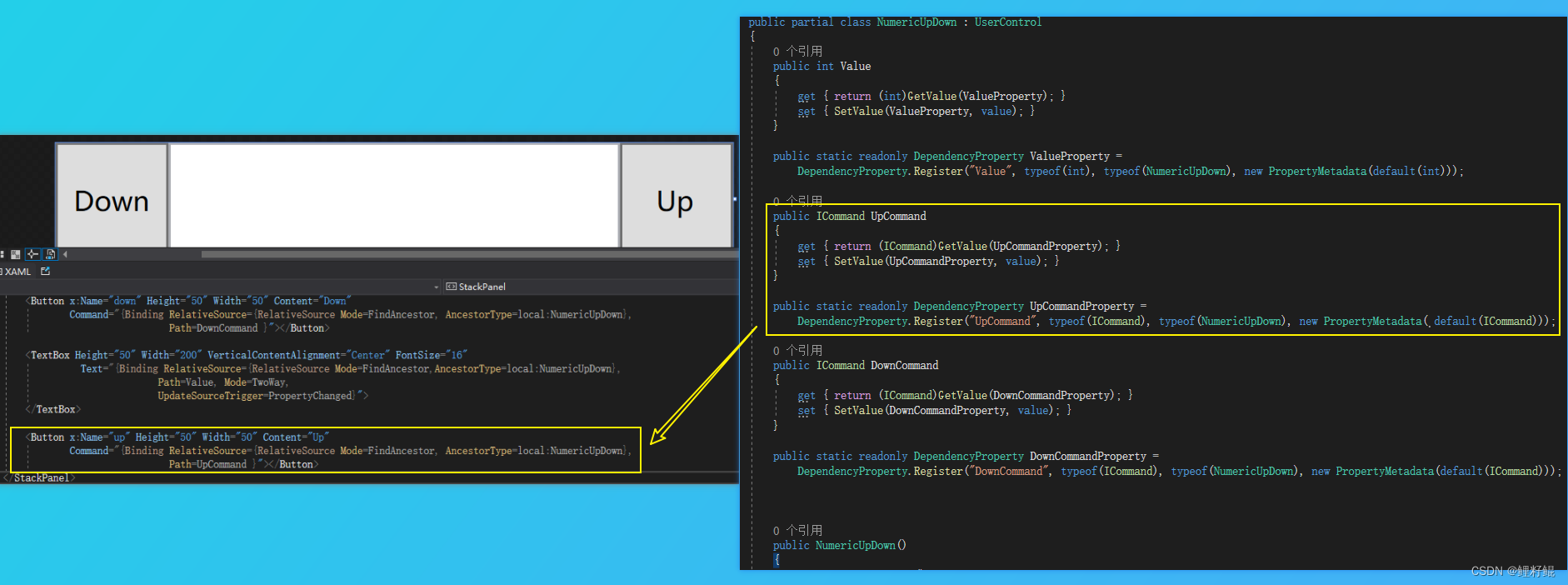
- 步骤1:将需要对外提供的属性和操作(命令)都定义成了依赖属性
public partial class NumericUpDown : UserControl
{
public int Value
{
get { return (int)GetValue(ValueProperty); }
set { SetValue(ValueProperty, value); }
}
public static readonly DependencyProperty ValueProperty =
DependencyProperty.Register("Value", typeof(int), typeof(NumericUpDown), new PropertyMetadata(default(int)));
public ICommand UpCommand
{
get { return (ICommand)GetValue(UpCommandProperty); }
set { SetValue(UpCommandProperty, value); }
}
public static readonly DependencyProperty UpCommandProperty =
DependencyProperty.Register("UpCommand", typeof(ICommand), typeof(NumericUpDown), new PropertyMetadata( default(ICommand)));
public ICommand DownCommand
{
get { return (ICommand)GetValue(DownCommandProperty); }
set { SetValue(DownCommandProperty, value); }
}
public static readonly DependencyProperty DownCommandProperty =
DependencyProperty.Register("DownCommand", typeof(ICommand), typeof(NumericUpDown), new PropertyMetadata(default(ICommand)));
public NumericUpDown()
{
InitializeComponent();
}
}
如果命令,需要传参,只需将命令参数也定义一个依赖属性即可,如下所示:
//命令参数
public object CommandParemeter
{
get { return (object)GetValue(CommandParemeterProperty); }
set { SetValue(CommandParemeterProperty, value); }
}
public static readonly DependencyProperty CommandParemeterProperty =
DependencyProperty.Register("CommandParemeter", typeof(object), typeof(NumericUpDown), new PropertyMetadata(default(object)));
- 步骤2:在用户控件的xaml中予以绑定
<StackPanel Width="300" Height="50" Orientation="Horizontal">
<Button x:Name="down" Height="50" Width="50" Content="Down"
Command="{Binding RelativeSource={RelativeSource Mode=FindAncestor, AncestorType=local:NumericUpDown},
Path=DownCommand }"></Button>
<TextBox Height="50" Width="200" VerticalContentAlignment="Center" FontSize="16"
Text="{Binding RelativeSource={RelativeSource Mode=FindAncestor,AncestorType=local:NumericUpDown},
Path=Value, Mode=TwoWay,
UpdateSourceTrigger=PropertyChanged}">
</TextBox>
<Button x:Name="up" Height="50" Width="50" Content="Up"
Command="{Binding RelativeSource={RelativeSource Mode=FindAncestor, AncestorType=local:NumericUpDown},
Path=UpCommand }"></Button>
</StackPanel>
1.2 再者在引用用户控件的地方,绑定相关的值和命令

<StackPanel Margin="20" Orientation="Horizontal">
<control:NumericUpDown Value="{Binding Num,UpdateSourceTrigger=PropertyChanged,Mode=TwoWay}" Height="50" Width="300"
UpCommand="{Binding UpCommand}"
DownCommand="{Binding DownCommand}">
</control:NumericUpDown>
<Button Height="50" Width="250" Content="更改值" Command="{Binding ChangeCommand}" Margin="10"></Button>
</StackPanel>
3.只对外提供属性不对外提供操作的用户控件封装案例
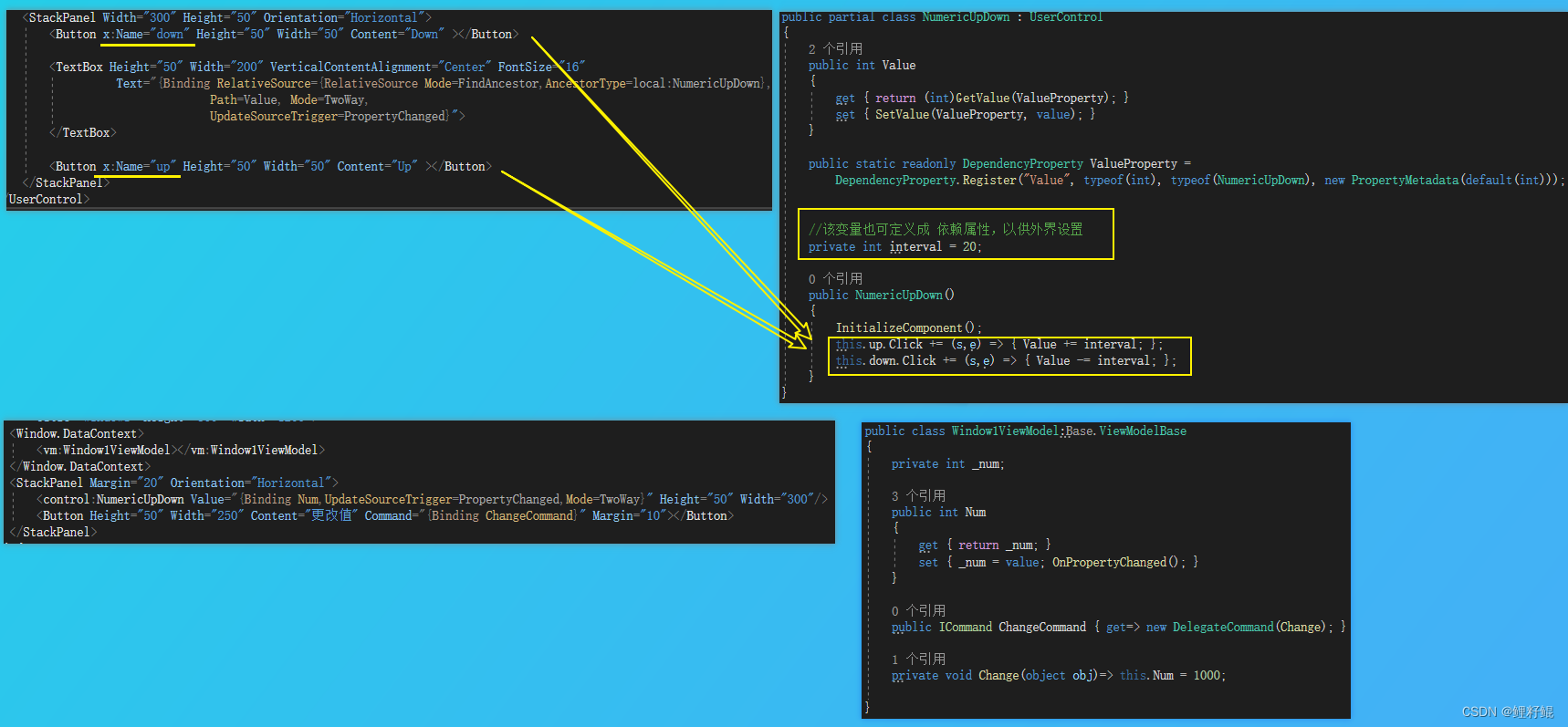
三、自定义控件的使用
1. 创建普通类继承现有控件进行扩展 - 圆角的Button
- 新建一个MyCornerButton类,继承自Button,定义一个ButtonCornerRadius依赖属性
public class MyCornerButton: Button
{
public CornerRadius ButtonCornerRadius
{
get { return (CornerRadius)GetValue(ButtonCornerRadiusProperty); }
set { SetValue(ButtonCornerRadiusProperty, value); }
}
public static readonly DependencyProperty ButtonCornerRadiusProperty =
DependencyProperty.Register("ButtonCornerRadius", typeof(CornerRadius), typeof(MyCornerButton), new PropertyMetadata(default(CornerRadius)));
}
- 在MyCornerButton控件的样式模板中绑定自定义的依赖属性
<!--此处省略很多样式代码,主要需要注意:
1、自定义控件通过TargetType 指定该样式的控件目标类型为自定义控件类
2、在模板中 将自定义的ButtonCornerRadius依赖属性,绑定到Border的CornerRadius 上
-->
<Style x:Key="MyCornerButtonStyle1" TargetType="{x:Type controls:MyCornerButton}">
<Setter Property="Template">
<Setter.Value>
<ControlTemplate TargetType="{x:Type controls:MyCornerButton}">
<Border x:Name="border" BorderBrush="{TemplateBinding BorderBrush}"
CornerRadius="{TemplateBinding ButtonCornerRadius}"
BorderThickness="{TemplateBinding BorderThickness}"
Background="{TemplateBinding Background}" SnapsToDevicePixels="True">
<ContentPresenter x:Name="contentPresenter" ContentTemplate="{TemplateBinding ContentTemplate}" Content="{TemplateBinding Content}" ContentStringFormat="{TemplateBinding ContentStringFormat}" Focusable="False" HorizontalAlignment="{TemplateBinding HorizontalContentAlignment}" Margin="{TemplateBinding Padding}" RecognizesAccessKey="True" SnapsToDevicePixels="{TemplateBinding SnapsToDevicePixels}" VerticalAlignment="{TemplateBinding VerticalContentAlignment}"/>
</Border>
<ControlTemplate.Triggers>
<Trigger Property="IsMouseOver" Value="True">
<Setter Property="Background" TargetName="border" Value="#FFBEE6FD"/>
<Setter Property="BorderBrush" TargetName="border" Value="#FF3C7FB1"/>
</Trigger>
</ControlTemplate.Triggers>
</ControlTemplate>
</Setter.Value>
</Setter>
</Style>
通过以上简单的两个步骤,我们就可以自定义一个简单好用的圆角按钮。
另外需额外补充一句:上面的圆角是通过在控件类内部定义依赖属性实现,当然我们也可以通过在一个公共的类中将圆角属性定义成附加属性,然后通过在样式中绑定附加属性来实现;如果我们很多地方都会使用到这个圆角属性,我们可以考虑将其放在公共的辅助类中,定义成附加属性。
2. 创建自定义控件

当我们通过新建项 创建 自定义控件NumericUpDown的时候,会生成以下内容:
- NumericUpDown控件的类,主要负责控件的业务逻辑
- 自动生成Themes 文件夹,以及下属的Generic.xaml 文件,在Generic.xaml编写控件对应的样式模板代码,负责控件的外观展示
在NumericUpDown控件类中会自动生成以下代码:
static NumericUpDown()
{
DefaultStyleKeyProperty.OverrideMetadata(typeof(NumericUpDown), new FrameworkPropertyMetadata(typeof(NumericUpDown)));
}
该代码是设置控件的默认样式,如果没有该代码,则无法展示在Generic.xaml中编写的控件默认样式。
另外我们是可以在该类中定义对外提供的依赖属性和事件/命令等以及编写控件相关的业务逻辑。
在Generic.xaml中编写的控件默认样式,该xaml文件中的样式,是不需要设置Key的,默认样式会通过TargetType去匹配。
具体案例如下:
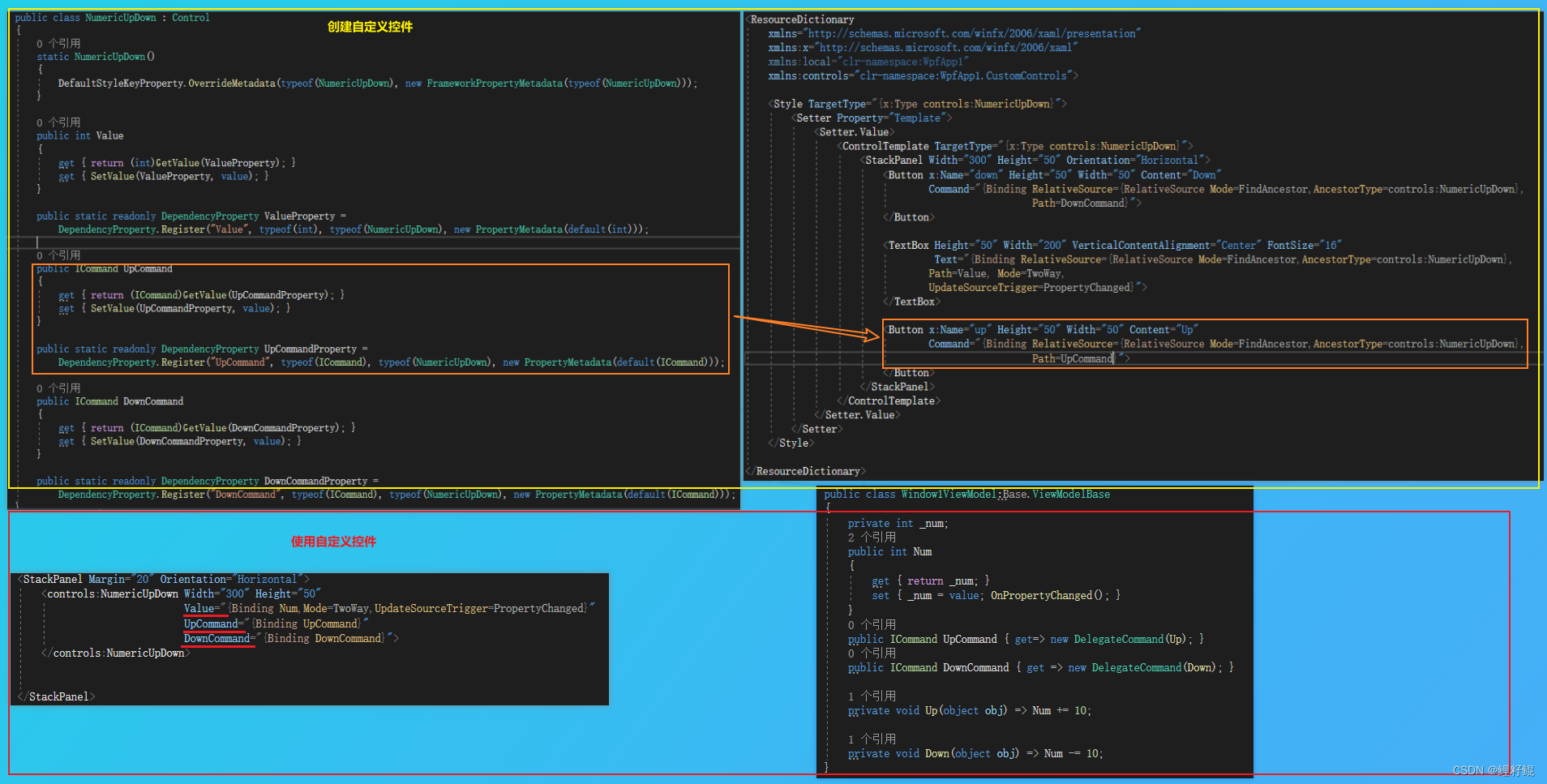
3.相关知识点
-
当我们在Generic.xaml中编写的控件默认样式时,对模板内相关控件指定了名称,那么当我们通过右键菜单自动生成模板副本的时候,生成的样式中就会和默认样式中的结构以及控件名称一致,如上案例中,在默认样式中,定义了一个up 的Button,那么重写该控件模板的时候,模板内就会自动生成一个名为up的Button。
-
若要指定控件所需的 FrameworkElement 对象,可使用 TemplatePartAttribute,它指定预期元素的名称和类型。
-
若要指定控件的可能状态,可使用 TemplateVisualStateAttribute,它指定状态的名称及其所属的 VisualStateGroup。 将 TemplatePartAttribute 和 TemplateVisualStateAttribute 放置在控件的类定义中。
以下示例为 NumericUpDown 控件指定 FrameworkElement 对象和状态。
[TemplatePart(Name = "UpButtonElement", Type = typeof(RepeatButton))]
[TemplatePart(Name = "DownButtonElement", Type = typeof(RepeatButton))]
[TemplateVisualState(Name = "Positive", GroupName = "ValueStates")]
[TemplateVisualState(Name = "Negative", GroupName = "ValueStates")]
[TemplateVisualState(Name = "Focused", GroupName = "FocusedStates")]
[TemplateVisualState(Name = "Unfocused", GroupName = "FocusedStates")]
public class NumericUpDown : Control
{
public static readonly DependencyProperty BackgroundProperty;
public static readonly DependencyProperty BorderBrushProperty;
public static readonly DependencyProperty BorderThicknessProperty;
public static readonly DependencyProperty FontFamilyProperty;
public static readonly DependencyProperty FontSizeProperty;
public static readonly DependencyProperty FontStretchProperty;
public static readonly DependencyProperty FontStyleProperty;
public static readonly DependencyProperty FontWeightProperty;
public static readonly DependencyProperty ForegroundProperty;
public static readonly DependencyProperty HorizontalContentAlignmentProperty;
public static readonly DependencyProperty PaddingProperty;
public static readonly DependencyProperty TextAlignmentProperty;
public static readonly DependencyProperty TextDecorationsProperty;
public static readonly DependencyProperty TextWrappingProperty;
public static readonly DependencyProperty VerticalContentAlignmentProperty;
public Brush Background { get; set; }
public Brush BorderBrush { get; set; }
public Thickness BorderThickness { get; set; }
public FontFamily FontFamily { get; set; }
public double FontSize { get; set; }
public FontStretch FontStretch { get; set; }
public FontStyle FontStyle { get; set; }
public FontWeight FontWeight { get; set; }
public Brush Foreground { get; set; }
public HorizontalAlignment HorizontalContentAlignment { get; set; }
public Thickness Padding { get; set; }
public TextAlignment TextAlignment { get; set; }
public TextDecorationCollection TextDecorations { get; set; }
public TextWrapping TextWrapping { get; set; }
public VerticalAlignment VerticalContentAlignment { get; set; }
}
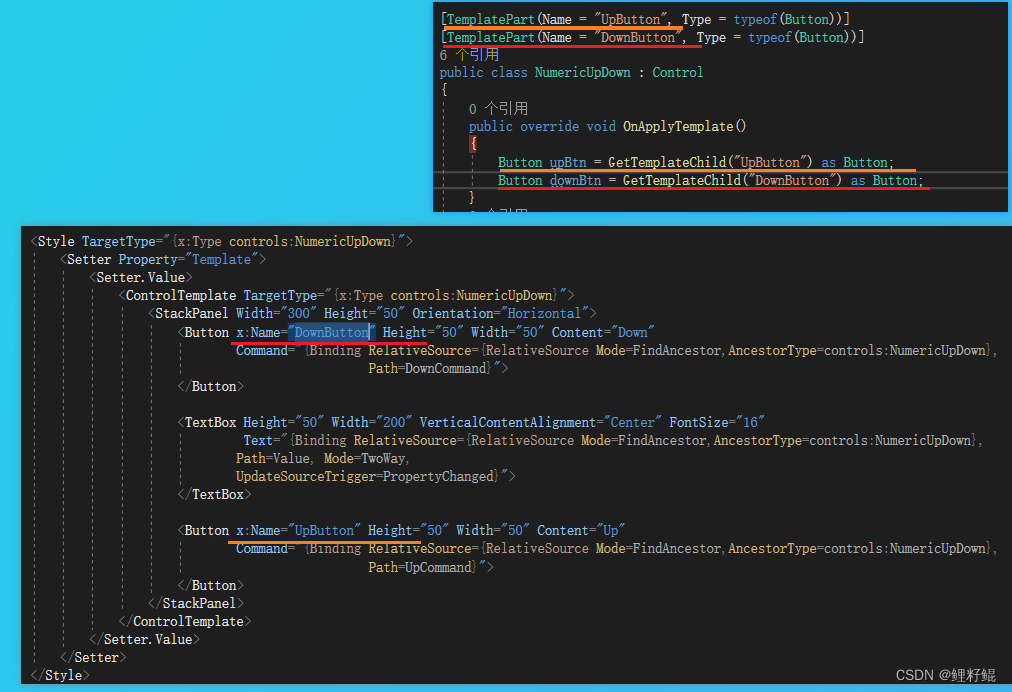
- 通常我们控件模板内的名称,尽量与TemplatePart特性中的名称保持一致,可减少一些不必要的麻烦。
MSDN上的完成应用案例如下:
<Style TargetType="{x:Type local:NumericUpDown}">
<Setter Property="Template">
<Setter.Value>
<ControlTemplate TargetType="local:NumericUpDown">
<Grid Margin="3" Background="{TemplateBinding Background}">
<VisualStateManager.VisualStateGroups>
<VisualStateGroup Name="ValueStates">
<VisualState Name="Negative">
<Storyboard>
<ColorAnimation To="Red" Storyboard.TargetName="TextBlock" Storyboard.TargetProperty="(Foreground).(Color)"/>
</Storyboard>
</VisualState>
<VisualState Name="Positive"/>
</VisualStateGroup>
<VisualStateGroup Name="FocusStates">
<VisualState Name="Focused">
<Storyboard>
<ObjectAnimationUsingKeyFrames Storyboard.TargetName="FocusVisual" Storyboard.TargetProperty="Visibility" Duration="0">
<DiscreteObjectKeyFrame KeyTime="0">
<DiscreteObjectKeyFrame.Value>
<Visibility>Visible</Visibility>
</DiscreteObjectKeyFrame.Value>
</DiscreteObjectKeyFrame>
</ObjectAnimationUsingKeyFrames>
</Storyboard>
</VisualState>
<VisualState Name="Unfocused"/>
</VisualStateGroup>
</VisualStateManager.VisualStateGroups>
<Grid>
<Grid.RowDefinitions>
<RowDefinition/>
<RowDefinition/>
</Grid.RowDefinitions>
<Grid.ColumnDefinitions>
<ColumnDefinition/>
<ColumnDefinition/>
</Grid.ColumnDefinitions>
<Border BorderThickness="1" BorderBrush="Gray" Margin="7,2,2,2" Grid.RowSpan="2" Background="#E0FFFFFF"
VerticalAlignment="Center" HorizontalAlignment="Stretch">
<TextBlock Name="TextBlock" Width="60" TextAlignment="Right" Padding="5"
Text="{Binding RelativeSource={RelativeSource FindAncestor,
AncestorType={x:Type local:NumericUpDown}},
Path=Value}"/>
</Border>
<RepeatButton Name="UpButton" Content="Up" Margin="2,5,5,0" Grid.Column="1" Grid.Row="0"/>
<RepeatButton Name="DownButton" Content="Down" Margin="2,0,5,5" Grid.Column="1" Grid.Row="1"/>
<Rectangle Name="FocusVisual" Grid.ColumnSpan="2" Grid.RowSpan="2" Stroke="Black" StrokeThickness="1" Visibility="Collapsed"/>
</Grid>
</Grid>
</ControlTemplate>
</Setter.Value>
</Setter>
</Style>
在ControlTemplate中通过VisualStateManager 管理,该控件在不同的状态下的样式,例如获得焦点,失去焦点等不同状态,也可以通过触发器去实现VisualStateManager 提供视觉管理功能
以下示例演示 NumericUpDown 的逻辑。
using System.Windows;
using System.Windows.Controls;
using System.Windows.Controls.Primitives;
using System.Windows.Input;
using System.Windows.Media;
namespace VSMCustomControl
{
[TemplatePart(Name = "UpButtonElement", Type = typeof(RepeatButton))]
[TemplatePart(Name = "DownButtonElement", Type = typeof(RepeatButton))]
[TemplateVisualState(Name = "Positive", GroupName = "ValueStates")]
[TemplateVisualState(Name = "Negative", GroupName = "ValueStates")]
[TemplateVisualState(Name = "Focused", GroupName = "FocusedStates")]
[TemplateVisualState(Name = "Unfocused", GroupName = "FocusedStates")]
public class NumericUpDown : Control
{
public NumericUpDown()
{
DefaultStyleKey = typeof(NumericUpDown);
this.IsTabStop = true;
}
public static readonly DependencyProperty ValueProperty =
DependencyProperty.Register("Value", typeof(int), typeof(NumericUpDown),
new PropertyMetadata(new PropertyChangedCallback(ValueChangedCallback)));
public int Value
{
get { return (int)GetValue(ValueProperty); }
set { SetValue(ValueProperty, value); }
}
private static void ValueChangedCallback(DependencyObject obj,DependencyPropertyChangedEventArgs args)
{
NumericUpDown ctl = (NumericUpDown)obj;
int newValue = (int)args.NewValue;
ctl.UpdateStates(true);
ctl.OnValueChanged(new ValueChangedEventArgs(NumericUpDown.ValueChangedEvent,newValue));
}
public static readonly RoutedEvent ValueChangedEvent =EventManager.RegisterRoutedEvent("ValueChanged", RoutingStrategy.Direct,typeof(ValueChangedEventHandler), typeof(NumericUpDown));
public event ValueChangedEventHandler ValueChanged
{
add { AddHandler(ValueChangedEvent, value); }
remove { RemoveHandler(ValueChangedEvent, value); }
}
protected virtual void OnValueChanged(ValueChangedEventArgs e)
{
// Raise the ValueChanged event so applications can be alerted
// when Value changes.
RaiseEvent(e);
}
private void UpdateStates(bool useTransitions)
{
if (Value >= 0)
{
VisualStateManager.GoToState(this, "Positive", useTransitions);
}
else
{
VisualStateManager.GoToState(this, "Negative", useTransitions);
}
if (IsFocused)
{
VisualStateManager.GoToState(this, "Focused", useTransitions);
}
else
{
VisualStateManager.GoToState(this, "Unfocused", useTransitions);
}
}
public override void OnApplyTemplate()
{
UpButtonElement = GetTemplateChild("UpButton") as RepeatButton;
DownButtonElement = GetTemplateChild("DownButton") as RepeatButton;
//TextElement = GetTemplateChild("TextBlock") as TextBlock;
UpdateStates(false);
}
private RepeatButton downButtonElement;
private RepeatButton DownButtonElement
{
get
{
return downButtonElement;
}
set
{
if (downButtonElement != null)
{
downButtonElement.Click -=
new RoutedEventHandler(downButtonElement_Click);
}
downButtonElement = value;
if (downButtonElement != null)
{
downButtonElement.Click +=
new RoutedEventHandler(downButtonElement_Click);
}
}
}
void downButtonElement_Click(object sender, RoutedEventArgs e)
{
Value--;
}
private RepeatButton upButtonElement;
private RepeatButton UpButtonElement
{
get
{
return upButtonElement;
}
set
{
if (upButtonElement != null)
{
upButtonElement.Click -=
new RoutedEventHandler(upButtonElement_Click);
}
upButtonElement = value;
if (upButtonElement != null)
{
upButtonElement.Click +=
new RoutedEventHandler(upButtonElement_Click);
}
}
}
void upButtonElement_Click(object sender, RoutedEventArgs e)
{
Value++;
}
protected override void OnMouseLeftButtonDown(MouseButtonEventArgs e)
{
base.OnMouseLeftButtonDown(e);
Focus();
}
protected override void OnGotFocus(RoutedEventArgs e)
{
base.OnGotFocus(e);
UpdateStates(true);
}
protected override void OnLostFocus(RoutedEventArgs e)
{
base.OnLostFocus(e);
UpdateStates(true);
}
}
public delegate void ValueChangedEventHandler(object sender, ValueChangedEventArgs e);
public class ValueChangedEventArgs : RoutedEventArgs
{
private int _value;
public ValueChangedEventArgs(RoutedEvent id, int num)
{
_value = num;
RoutedEvent = id;
}
public int Value
{
get { return _value; }
}
}
}
通过该案例主要理解三个东西:
- 1 TemplateVisualState 和VisualStateManager 这部分是 管理视觉效果的,用于设置在不同状态下控件的样式
- 2 TemplatePart 和 GetTemplateChild方法的使用,通过TemplatePart 预定义控件的组成部分相关信息,通过GetTemplateChild获取指定名称的预定义组件
- 3 OnApplyTemplate ,每当应用程序代码或内部进程调用FrameworkElement.ApplyTemplate(),都将调用此方法,一般在静态构造函数执行完成后,就会调用该方法,我们可以在该方法中使用GetTemplateChild获取指定名称的预定义组件,给该组件附加一些事件或者业务逻辑。如下图所示:
结语
以上就是本文的内容,希望以上内容可以帮助到您,如文中有不对之处,还请批评指正。
参考资料:
控件自定义
讲解WPF中用户控件和自定义控件的使用

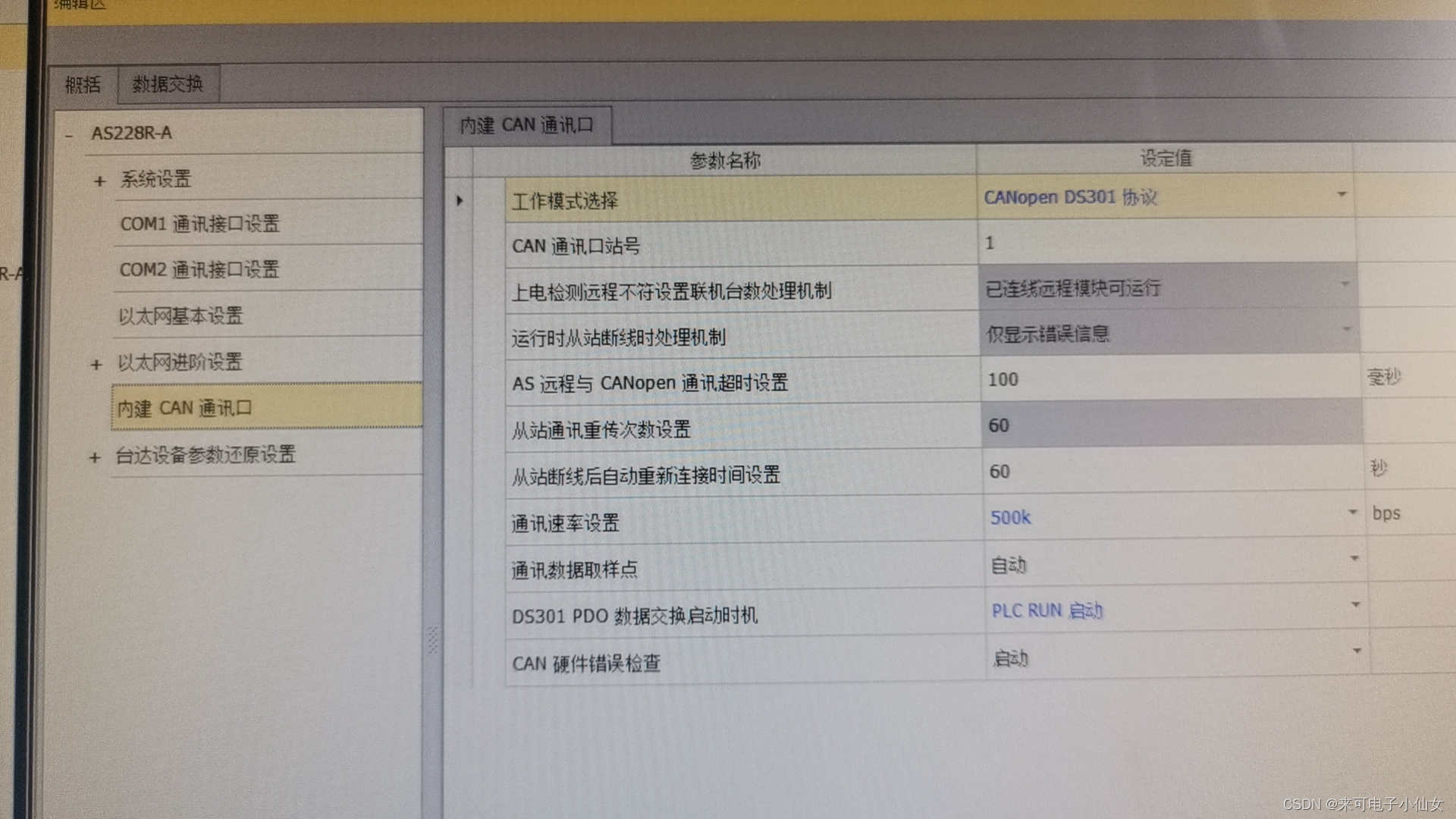
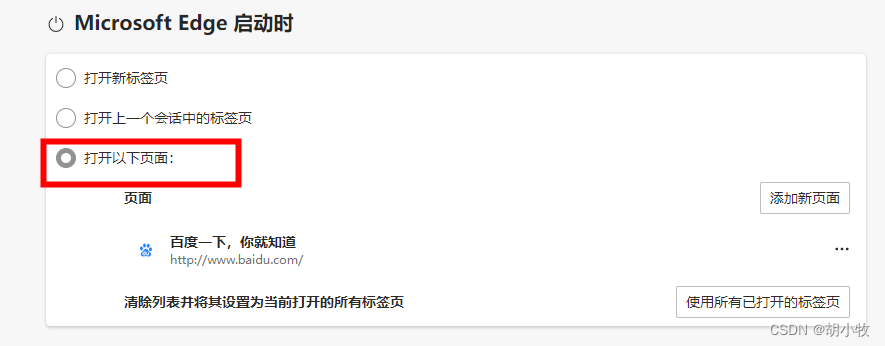

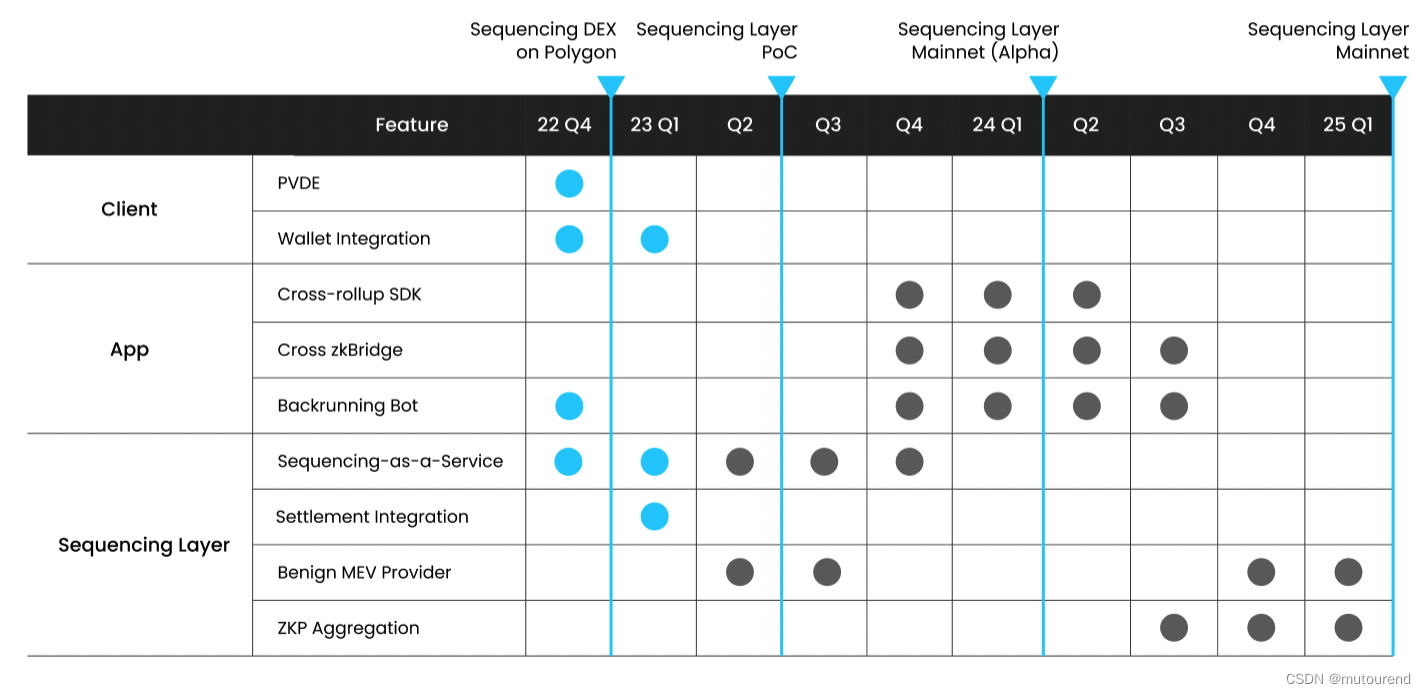
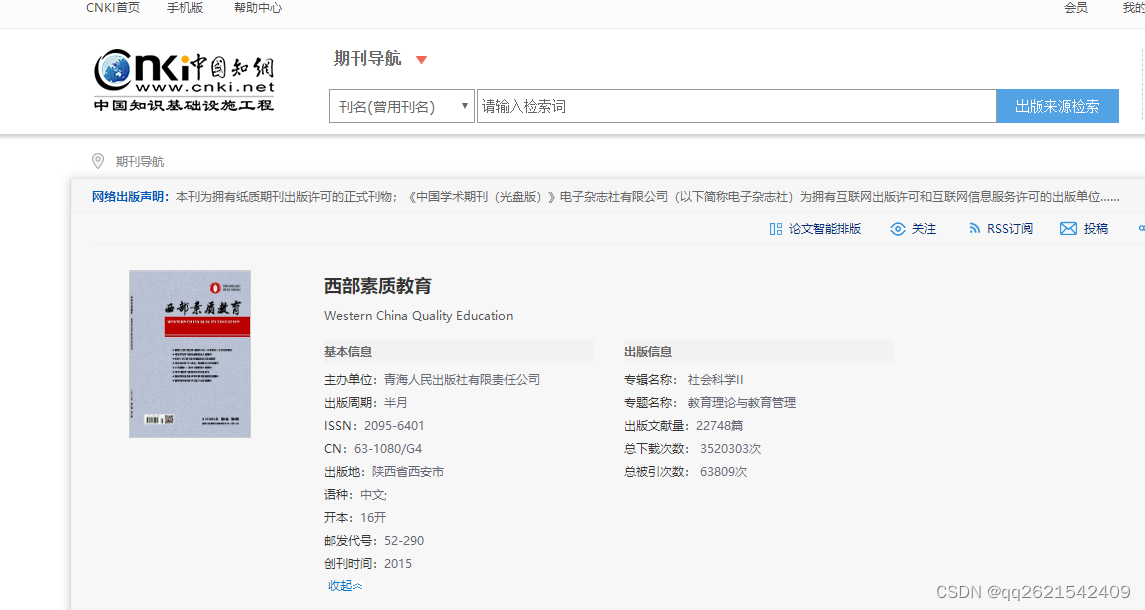






![Ctfshow [单身杯]](https://img-blog.csdnimg.cn/0966a2109b324c5bad8344e244b612b4.png#pic_center)
